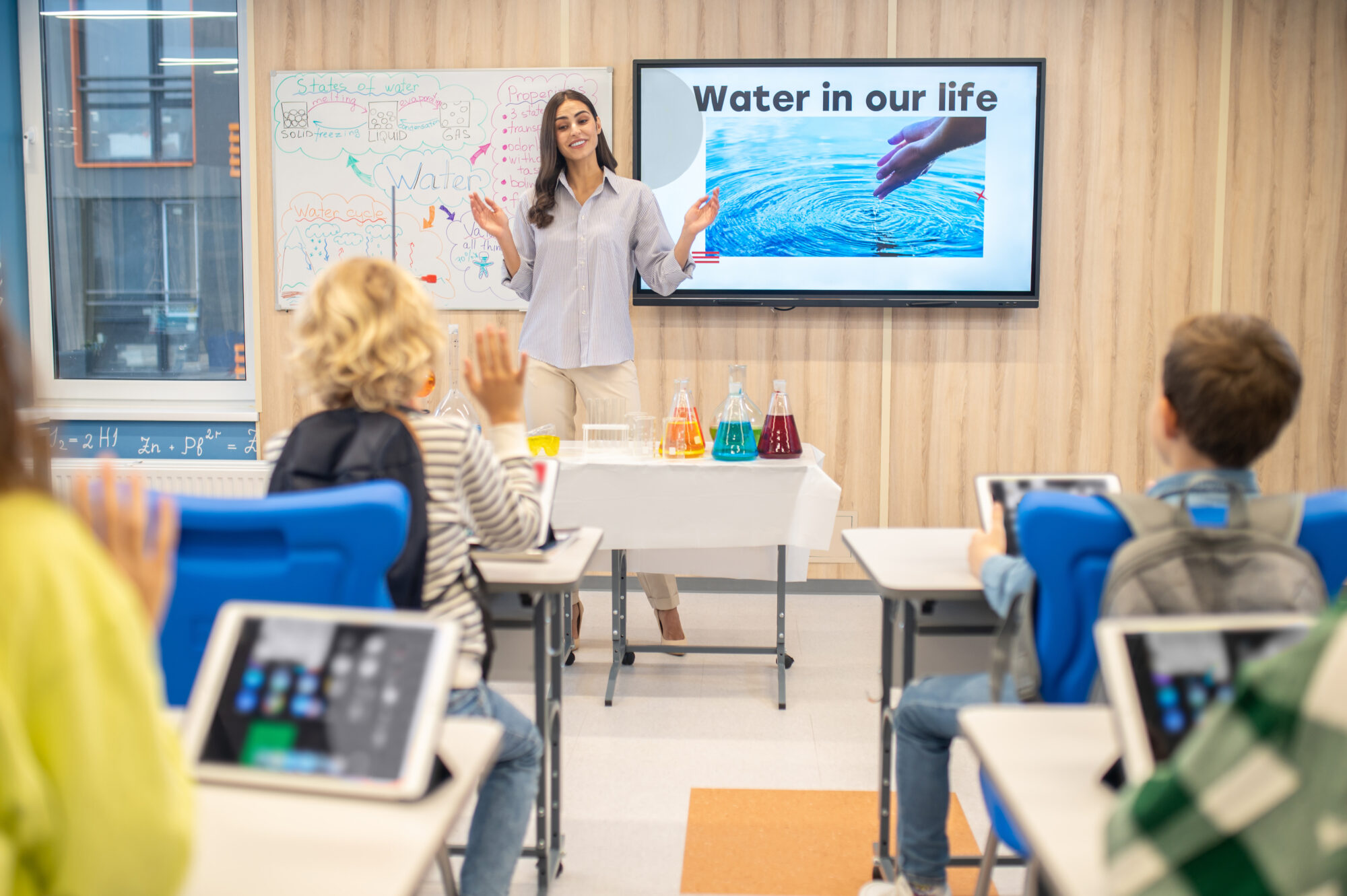Modern technology opens up new opportunities for education. Interactive equipment for schools helps to make the learning process more interesting, effective and accessible to all students. Its use promotes critical thinking, creativity and interactive interaction between students and teachers.
The use of interactive panels, tables and information stands allows traditional learning to be combined with digital technology to increase engagement and improve memorisation of information.

An interactive panel is a multifunctional device that combines a digital whiteboard, a computer and a multimedia system. It allows teachers to demonstrate educational material, use interactive programmes, and students to interact directly with the image on the screen.
Characteristics of interactive panels:
Interactive panels are ideal for schools as they provide quick access to digital content and the ability to work collaboratively.
Interactive tables are also referred to as learning touch panels arranged horizontally. They are designed for students to work together to promote communication skills and creative thinking. An interactive table is used in a variety of educational settings including schools, kindergartens and specialised education centres.
Interactive tables allow for interactive lessons, creative assignments and specialised learning software. They allow for simultaneous interaction between several students, which promotes group learning, logical thinking and co-ordination of movements.
The main advantages of interactive tables:
Interactive tables are particularly useful in primary schools, as they allow you to combine game-based teaching methods with educational programmes. In addition, an interactive table can be used for solving maths problems, working with maps, training memory and expanding children’s horizons. Such devices are also widely used in kindergartens and extracurricular educational institutions.
Information desks are modern touchscreen kiosks that provide access to important information and help automate information processes in educational institutions. They are used to improve communication between school administrators, teachers and students.
Information stands are widely used in educational institutions. They can be used to:
These devices can be integrated into the learning process, helping to organise independent learning and improve access to information.
When choosing interactive devices, it is worth considering several important factors that influence the effectiveness of their use in the educational process.
Before purchasing, it is recommended that you:
By making the right choice, multimedia equipment will be a powerful tool for modernising the educational process, increasing student engagement and improving teaching effectiveness.
Interactive equipment prices vary depending on features, size and additional functions:
To choose the best equipment, you should go for trusted suppliers who provide warranty and service.
Interactive equipment for schools is the key to modern education, not only improving the learning process but also increasing student engagement. It makes lessons more interactive, makes it easier to explain complex topics using visuals, and helps students develop digital skills.
When choosing an interactive panel, table or information stand, it is important to consider not only the technical characteristics, but also the methodology for implementing them in the learning process. Teachers should be trained in the use of the equipment, and the software should meet educational standards. In addition, interactive equipment helps to create a more flexible and adaptive learning environment where each student can interact with the material at their own pace.